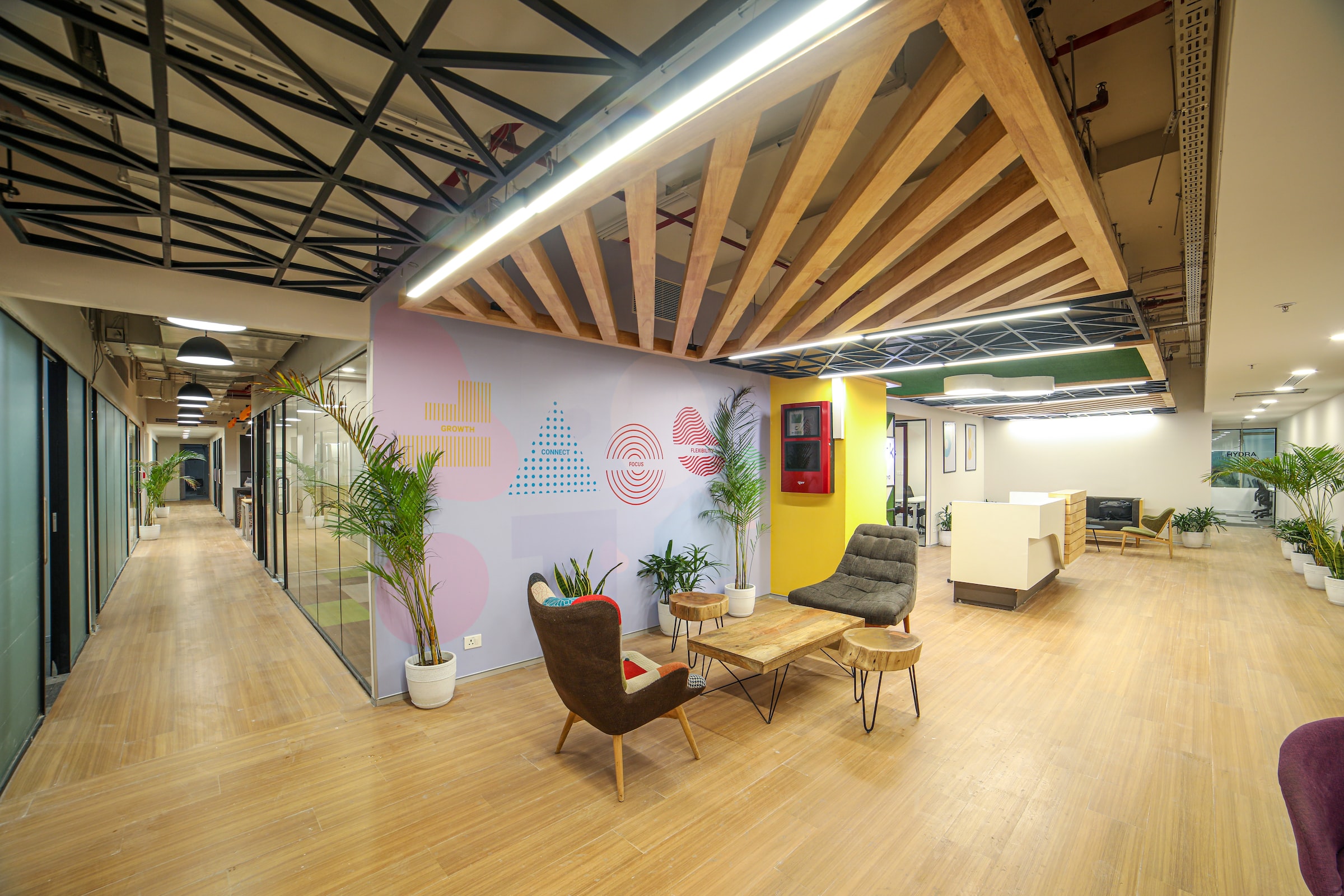Making a case for workplace change can be a tricky process. In this episode, your host Sabine Ehm dives deep into a conversation with Liz Burow about how to build a business case to lead office transformation.
Our Workplace Change Expert Guest
Liz Burow, former Director of Workplace Strategy at WeWork, specializes in building business cases for workplace transformation, conducting research, and facilitating processes on behalf of end-users. She also tracks emerging trends to inform on new workplace products, not just designs.
With over 20 years of experience in architecture and workplace design strategy, Liz has worked with fortune 100 companies as well as fast-growing startups, spanning tech, finance, media, and creative sectors. She’s ‘done it all’.
Liz focuses on the data but doesn’t use it as her only method for decision-making. Her secret superpower is that she is a visual thinker; “if you’re thinking it, I’m likely drawing it”. People always try to refine ideas through words, but she’s an advocate for visual representations, with the belief that it’s easier to come together on a drawing than language.
Leveraging data and radical workplace change
Listen to the following few clips to get a sense of how Liz’s approach creates a well-informed system of decision-making leading to success.
“Corporate real estate is pretty risk-averse and wants a lot of data to back up any decision. Which, I completely understand. I’m all about evidence and data to inform decision-making. But there is, I think, a thing that happens where everyone settles on the middle, and the safe idea, or the incremental change, not the revolutionary change.” – Liz Burow
Making a decision for workplace change in real estate can come at a high cost. This leads to corporate culture swaying towards making risk-averse decisions, backed by data. Taking a leap of faith towards a radical shift does not come naturally to the CRE community.
“Yes, we have the data, but there’s a little bit of hypothesis in something that we can’t prove until we test it or we try it.”
Challenges of the change strategy in corporate real estate
The industry change strategy trend is to look at what others are doing, and decide whether or not to follow suit. Bringing external innovative ideas to the table is a great approach. Unfortunately, it’s often met with watered-down responses or simply, ‘no’. The challenge is to pay attention to in-house pain points and trust your gut in decision-making.
“You need to have data, but you need to be able to make sense of data as well, so it doesn’t help to create a heap [of it], because actually nobody is going to read through it. You have to find the right points to build that business case. The data itself is not enough.” – Sabine Ehm
How to incentivize workplace design change
At the end of the day, data is just that: data. Numbers and charts determining trends. But, what do these trends infer when brought together? Raw data requires interpretation to make sense of it. That’s where bringing in a professional consultant can be hugely beneficial. In this clip, Sabine speaks to a previous conversation with Liz on this very topic.
Liz follows with the idea of storytelling. We need data, but we love narratives. Bringing the two together to form an informed hypothesis can push decision-makers to be excited to test new things. And, sometimes, it takes just doing it. Once it’s actually been done, then people can actually “see it and touch it and feel it”.
“I think a lot in terms of retail environments, you’re trying to pull people in, you’re trying to incentivize them to come in with the cool stuff you have. You’re not making people shop there every day. So we have to think the same way in the workplace design.” – Liz Burow
Workplace culture is vital
The perception of the office has changed significantly, and companies need to focus on meeting the new needs of their employees. As we move back into the physical office space, ask yourself, what are the cool things we’re offering that draw our workforce in? Are they utilizing all the spaces and equipment we’ve provided? What could be missing?
Having this mindset, as opposed to the “you have to show up 5 days” whether you like it or not, can be the tipping point in creating a sustainable, positive work culture. To find this data, Liz suggests using a myriad of tools, ranging from sensors and booking platforms to HR systems such as surveys and social capital networks.
“It’s really good to try to position the workplace culture into a growth mindset before you even introduce a change. The ways I think about doing that are: change should not be a surprise to you, you should be a part of the change that’s happening.” – Liz Burow
Liz emphasizes the importance of co-creation with end-users for successful office transformation. Get them involved as much as possible, so they feel a part of the decision-making and more importantly, the outcome. “When you’re doing research, involve as many end-users as possible, communicate to them that they’re influential on new ideas and practices, and then circle back with them”.
Determining influencers in various departments can also be a great way to provide support to employees. Find champions amongst end-users that can funnel updates and resources to those curious and/or concerned. This can mitigate tension and allow for dynamic workplace culture.
Conclusion for workplace transformation
Change is good. Radical change is better. Liz is in favor of pushing the boundaries by using stories and creating a robust internal support system. Data is important, and an excellent tool for forming hypotheses. However, taking into account real, internal pain points is just as important when determining movement. Yet, don’t forget, nothing works better than actually testing it. By testing your hypothesis, people will be able to come to real, justified conclusions on the success of the implementation of the workplace change.
Listen to this (episode No. 2) and other podcast episodes.
Want the right data to support your workplace change strategy?

 5’
5’




